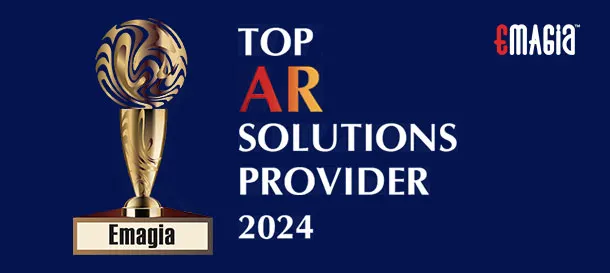The Accounts Receivable (AR) Process Cycle—often simply called the accounts receivable process or the cycle of accounts receivable—is a fundamental component of a company’s financial operations. It encompasses the series of accounts receivable procedures and workflows used to manage and collect payments owed by customers for goods or services provided on credit. A well-structured accounts receivable workflow ensures timely cash inflows, maintains healthy cash flow, and fosters strong customer relationships. This comprehensive guide delves into each aspect of the accounts receivable cycle, offering insights into its importance, steps involved, best practices, challenges, technological advancements, and more.
Introduction to Accounts Receivable Process Cycle
The Accounts Receivable Process Cycle—also known as the account receivable process—refers to the systematic approach businesses use to manage credit sales and collect payments from customers. This cycle begins with establishing credit policies and extends through invoicing, accounts receivable billing, payment collection, and account reconciliation. An efficient ar process is vital for maintaining liquidity and supporting business growth.
Order to Cash (O2C) Overview
In the broader finance world, order to cash definition (often shortened to OTC) describes the end-to-end set of activities—from receiving a customer order to applying cash. In other words, OTC means converting orders into cash as swiftly and efficiently as possible, and the receivable process is a critical slice of that continuum.
Importance of the Accounts Receivable Process Cycle
A well-managed AR process cycle is crucial for several reasons:
- Cash Flow Management: Timely accounts receivable payment processing ensures that the company has the necessary funds to meet its operational expenses and invest in opportunities.
- Customer Relationship Management: A structured AR process helps maintain transparency and fosters trust between businesses and customers.
- Financial Stability: Reducing outstanding receivables minimizes bad debts and improves financial health.
- Operational Efficiency: Streamlined AR operations reduce administrative burdens and enhance productivity.
Key Components of the Accounts Receivable Process Cycle
Credit Policies and Terms
A well-defined credit policy outlines the terms and conditions for extending credit to customers, including payment deadlines, interest rates, and penalties for late payments.
Customer Credit Evaluation
Before extending credit, businesses assess the creditworthiness of customers through financial statements, credit scores, and payment history. This evaluation forms the foundation of any robust accounts receivable system.
Invoice Generation and Delivery
Invoices should be accurate, detailed, and sent promptly after the transaction. Electronic invoicing supports a faster receivable process and helps in quick delivery and tracking.
Payment Collection
Businesses should offer multiple payment options and follow up on overdue invoices with automated reminders to streamline the accounts receivable collection process.
Cash Application
Once payments are received, they must be recorded correctly and matched with the corresponding invoices to ensure accurate financial records and efficient accounts receivable payment processing.
Dispute and Deduction Management
Disputes arise due to billing errors, quality issues, or service discrepancies. A structured dispute resolution process minimizes delays in payment collection.
Collections Management
Effective collections management involves tracking overdue invoices and implementing escalation strategies for persistent defaulters.
Reporting and Analysis
Regular analysis of AR reports provides an accounts receivable description of outstanding balances, helps in identifying trends, optimizes cash flow, and improves decision-making.
Detailed Steps in the Accounts Receivable Process Cycle
Step 1: Establishing Credit Policies
Define the eligibility criteria, credit limits, and payment terms based on customer risk assessment.
Step 2: Evaluating Customer Creditworthiness
Conduct background checks and analyze financial statements before approving credit applications.
Step 3: Setting Up Customer Accounts
Ensure all customer details are documented accurately, including billing information and payment preferences, to keep the accounts receivable workflow error-free.
Step 4: Generating and Issuing Invoices
Create professional invoices with clear payment terms, itemized charges, and due dates.
Step 5: Monitoring Accounts Receivable Aging
Use aging reports to track overdue accounts and prioritize follow-ups within the accounts receivable system.
Step 6: Implementing Collections Strategies
Develop a structured approach for collections, including automated reminders and legal actions if necessary, as part of your accounts receivable collection process.
Step 7: Managing Disputes and Deductions
Have a dedicated team to handle disputes and resolve them efficiently to prevent delayed payments.
Step 8: Applying Cash Receipts
Ensure proper allocation of received payments to the respective invoices to maintain accurate financial records.
Step 9: Reconciling Accounts
Regular reconciliation prevents discrepancies and ensures financial accuracy.
Step 10: Reporting and Analysis
Generate detailed AR reports to assess performance and identify improvement areas across the entire cycle of accounts receivable.
Best Practices for an Effective Accounts Receivable Process Cycle
- Implement automated invoicing and payment tracking.
- Offer flexible payment methods for customer convenience.
- Regularly review credit policies and update them based on business needs.
- Maintain a proactive accounts receivable billing and collections strategy to reduce overdue accounts.
- Train AR staff to handle disputes efficiently and professionally.
Common Challenges in the Accounts Receivable Process Cycle and How to Overcome Them
Late Payments
- Implement early-payment discounts.
- Use automated reminders to reduce delays.
Disputed Invoices
- Ensure invoices are accurate and include all necessary details.
- Establish a quick dispute resolution process.
Inefficient Processes
Utilize accounts receivable automation solutions to minimize manual mistakes and accelerate processing.
Lack of Visibility
Utilize real-time dashboards for tracking receivables and customer payment behaviors.
High Days Sales Outstanding (DSO)
Consistently monitor Days Sales Outstanding (DSO) metrics and modify credit policies as needed to improve performance.
Technological Advancements in the Accounts Receivable Process Cycle
Automation and AI
AI-powered tools help automate invoicing, collections, and cash application, reducing human intervention and errors across the entire accounts receivable system.
Integrated AR Management Systems
ERP and cloud-based solutions provide seamless integration with accounting systems for efficient AR management.
Electronic Invoicing and Payments
E-invoicing accelerates payment cycles and reduces paperwork.
Data Analytics and Reporting Tools
Advanced analytics offer insights into customer payment trends and help in forecasting cash flow.
The Role of Accounts Receivable in Cash Flow Management
Impact on Working Capital
Efficient AR management ensures a steady cash inflow, which is essential for business sustainability.
Strategies to Improve Cash Flow Through AR
- Offer multiple payment options.
- Encourage early payments with discounts.
- Automate payment reminders and follow-ups.
How Emagia Transforms the Accounts Receivable Process Cycle
AI-Powered Automation
Emagia leverages AI to streamline invoicing, collections, and dispute management, reducing manual workload.
Comprehensive AR Management Solutions
With real-time tracking and automated workflows, Emagia improves efficiency and cash flow across your entire accounts receivable process.
Advanced Analytics and Reporting
Data-driven insights help businesses optimize their AR strategies and minimize risks.
Improved Cash Flow and Efficiency
Emagia’s automation solutions accelerate payment collections and enhance financial stability.
FAQs: Accounts Receivable Process Cycle
What is the accounts receivable process cycle?
The accounts receivable process cycle refers to the series of steps businesses follow to manage credit sales and collect payments from customers.
What is an account receivable definition?
Account receivable definition: money owed to a business by its customers for goods or services delivered on credit.
What are the steps involved in the accounts receivable process?
The process includes credit assessment, invoicing, payment collection, dispute resolution, and account reconciliation.
How can businesses improve their accounts receivable process?
By implementing automation, offering flexible payment options, and maintaining a structured accounts receivable collection process.
What challenges are commonly faced in the accounts receivable process?
Late payments, invoice disputes, high DSO, and inefficient manual processes are common challenges.
How does automation benefit the accounts receivable process?
Automation reduces errors, improves efficiency, and accelerates the payment collection process.
What is Days Sales Outstanding (DSO) and why is it important?
DSO measures the average number of days a company takes to collect payments, serving as a key accounts receivable description metric. Lower DSO indicates better cash flow management.
How does Emagia improve the accounts receivable process?
Emagia provides AI-driven automation, real-time tracking, and advanced analytics to optimize AR processes.




